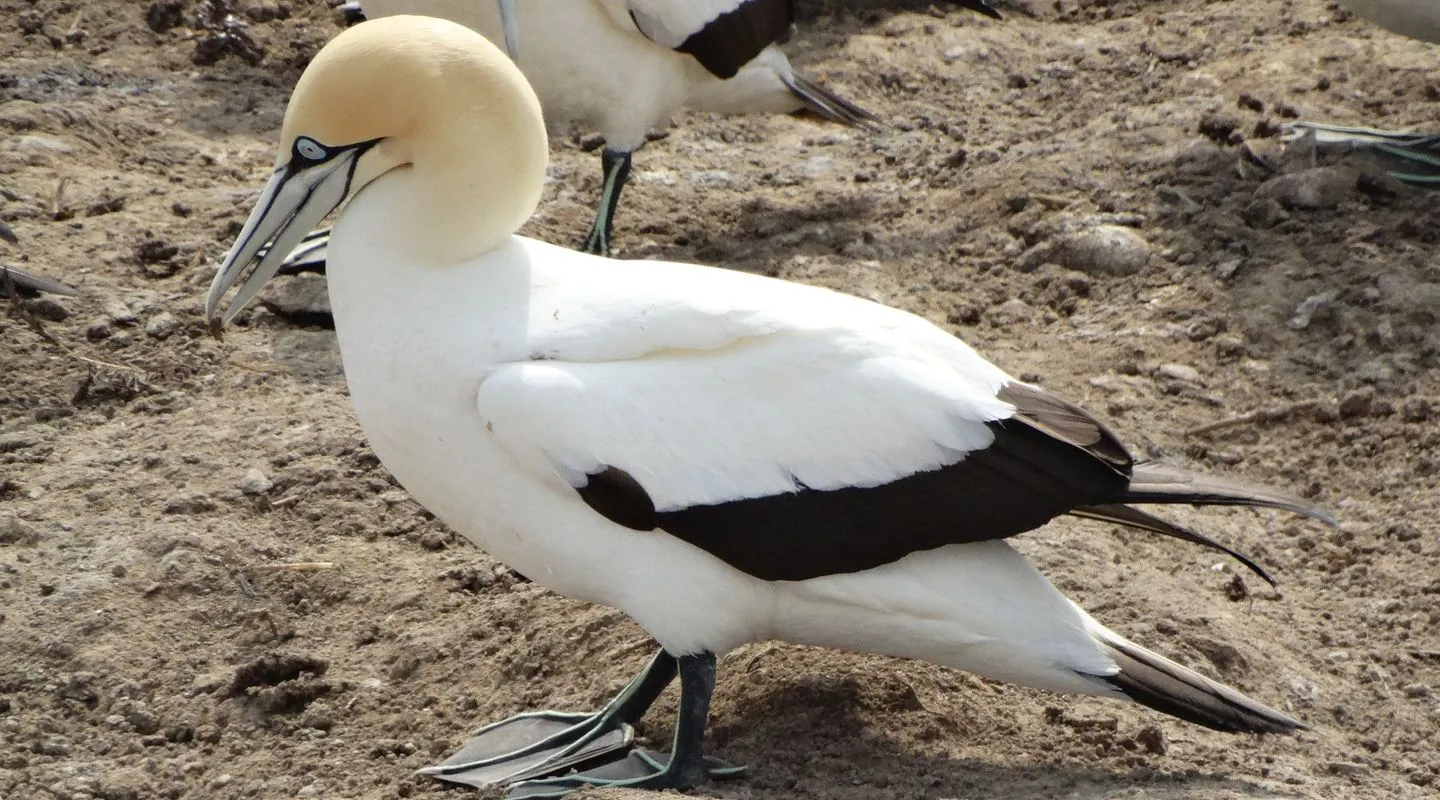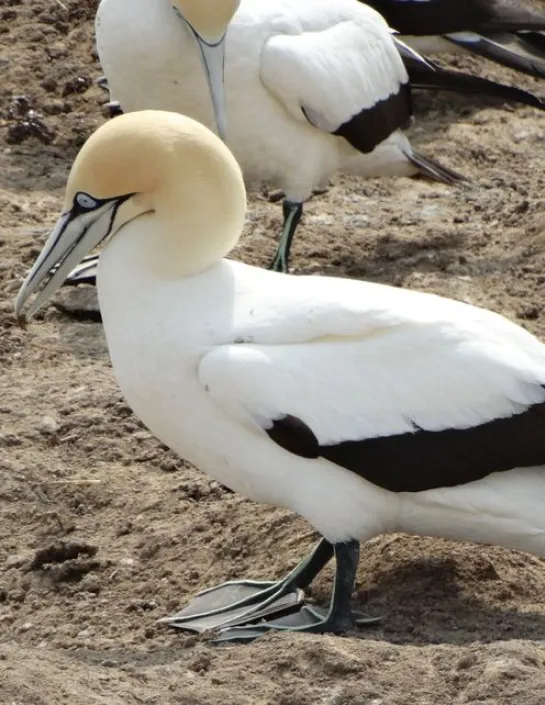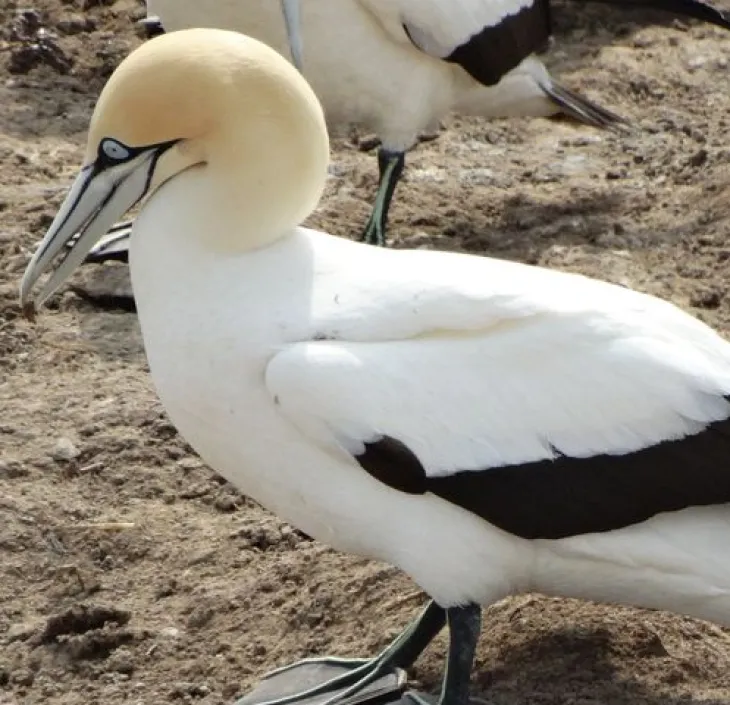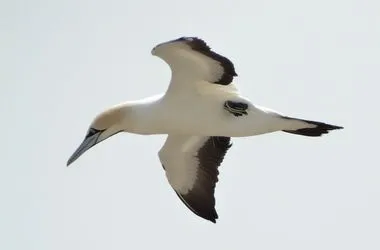VIRTUAL ANIMAL IN AUGMENTED-REALITY
The Cape Gannet is one of the impressive figures that you will be able to discover in the Grand Large experience.

Virtual animals
VIRTUAL ANIMAL IN AUGMENTED-REALITY
The Cape Gannet is one of the impressive figures that you will be able to discover in the Grand Large experience.

Identity card
Not Evaluated
Species endemic to Southern Africa, which breeds in South Africa and Namibia.
Coastal waters and offshore, usually within 120 km of land.
90 cm, wingspan 160 to 175 cm.
Fish-eaters, mainly sardines and anchovies.

This seabird can travel up to 450 km in a day in search of food.
Underwater, the Cape Gannet takes on a completely different form. It becomes a submarine with its webbed fingers that it uses to propel itself forwards and its wings that become fins. It uses its sharp beak to capture its prey, mainly sardines. This seabird takes advantage of the manna of the sardine run, when billions of sardines gather off the coast of South Africa. It is a "torpedo of the sky" that can dive into the ocean to capture its prey at speeds of up to 100 km/h.
Augmented-reality experience
The Cape Gannet is one of the impressive figures that you will be able to discover in the Grand Large experience.
This strictly marine species breeds on small flat or gently sloping islands off South Africa. It is spread across 6 islands. Most of the birds stay within 500 km of their breeding site. The Cape Gannet lives off the coast of Africa, between the Mozambique Channel and the Gulf of Guinea.
The Cape Gannet population is made up of 80,000 to 100,000 pairs that breed between September and April. A single egg is incubated for one and a half months and yields a hatchling that leaves the nest after 3 months.
It feeds mainly on shoaling pelagic fish such as the anchovy Engraulis capensis, the sardine Sardinops sagax or the saury Scomberesox saurus, as well as on waste from fishing boats, including demersal fish. Its diet follows the fluctuations in abundance of these species in South Africa.
JOURNEY ON THE HIGH SEAS

Augmented-reality animals
The Ocean Mag
In the spotlight
Found in all the world's seas, the jellyfish intrigues and fascinates. But watch out, you might get burnt !

Article
On 15 July, 40 juvenile Atlantic lookdowns, born thanks to the partnership between Nausicaá and BioNaMeris, will be sent to La Rochelle.
Article
In order to breed, the male Banggaï cardinalfish recovers the fertilised eggs and stores them in its mouth until they hatch.